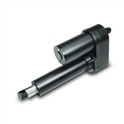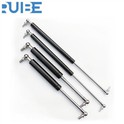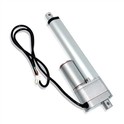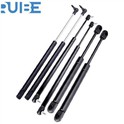When it comes to using a bonnet gas spring, safety is of utmost importance. As a bonnet gas spring supplier, I've seen firsthand the impact that proper safety precautions can have on the longevity and safe operation of these products. In this blog post, I'll share some essential safety tips to keep in mind when using a bonnet gas spring.
Understanding Bonnet Gas Springs
Before delving into safety precautions, it's crucial to understand what a bonnet gas spring is and how it works. A bonnet gas spring is a type of mechanical device that uses compressed gas to provide controlled motion and support. It consists of a cylinder, a piston rod, and a gas chamber filled with nitrogen gas. When the piston rod is compressed, the gas inside the chamber is also compressed, storing energy. This stored energy is then released when the piston rod is extended, providing the necessary force to lift or support the bonnet.
Bonnet gas springs are commonly used in automotive applications to support the bonnet or hood of a vehicle. They offer several advantages, including smooth and controlled opening and closing, reduced effort required to lift the bonnet, and improved safety by preventing the bonnet from suddenly closing. Additionally, they are also used in other applications such as storage beds and tailgates. You can find more information about Gas Spring for Car, Gas Spring for Storage Bed, and Tailgate Gas Spring on our website.
Safety Precautions When Using a Bonnet Gas Spring
1. Installation
- Read the Manual: Before installing a bonnet gas spring, carefully read the manufacturer's installation manual. The manual provides detailed instructions on how to install the gas spring correctly, including the recommended mounting points, torque specifications, and any special considerations.
- Use the Right Tools: Ensure that you have the appropriate tools for the installation process. Using the wrong tools can damage the gas spring or lead to improper installation, which can compromise its safety and performance.
- Check for Compatibility: Make sure that the bonnet gas spring you are installing is compatible with your vehicle or application. Consider factors such as the weight of the bonnet, the required force, and the mounting dimensions. Using an incompatible gas spring can result in poor performance or even safety hazards.
- Inspect the Gas Spring: Before installation, inspect the gas spring for any visible damage or defects. Check for leaks, dents, or scratches on the cylinder and piston rod. If you notice any issues, do not install the gas spring and contact the supplier for a replacement.
2. Maintenance
- Regular Inspections: Periodically inspect the bonnet gas spring for signs of wear, damage, or leaks. Check the mounting points for looseness or corrosion. If you notice any problems, address them immediately to prevent further damage or safety issues.
- Lubrication: Some bonnet gas springs require lubrication to ensure smooth operation. Refer to the manufacturer's recommendations for the appropriate lubricant and lubrication intervals. Applying the wrong lubricant or over-lubricating can damage the gas spring.
- Cleaning: Keep the gas spring clean to prevent dirt, debris, and moisture from accumulating. Use a mild detergent and a soft cloth to clean the cylinder and piston rod. Avoid using abrasive cleaners or solvents that can damage the surface of the gas spring.
3. Operation
- Do Not Overload: Do not exceed the maximum load capacity of the bonnet gas spring. Overloading the gas spring can cause it to fail, resulting in sudden closure of the bonnet or other safety hazards. Refer to the manufacturer's specifications for the maximum load capacity of the gas spring.
- Use Caution When Opening and Closing: When opening or closing the bonnet, use slow and controlled movements. Avoid slamming the bonnet shut or forcing it open. Sudden or excessive force can damage the gas spring and increase the risk of injury.
- Keep Hands and Fingers Clear: When the bonnet is open, keep your hands and fingers clear of the gas spring and the moving parts. The gas spring can exert a significant amount of force, and getting your fingers caught can result in serious injury.
4. Storage
- Store in a Safe Place: When not in use, store the bonnet gas spring in a safe and dry place. Avoid storing it in areas where it can be exposed to extreme temperatures, moisture, or chemicals.
- Protect from Damage: Protect the gas spring from damage during storage. You can use a protective cover or wrap it in a soft cloth to prevent scratches or dents.
Conclusion
Using a bonnet gas spring can provide many benefits, but it's essential to follow the proper safety precautions to ensure its safe and reliable operation. By following the installation, maintenance, operation, and storage guidelines outlined in this blog post, you can minimize the risk of accidents and extend the lifespan of your bonnet gas spring.
If you have any questions or need further information about bonnet gas springs or other gas spring products, please don't hesitate to contact us. We are a leading supplier of high-quality gas springs and are committed to providing our customers with the best products and services. Whether you are looking for a gas spring for your car, storage bed, or tailgate, we have the right solution for you. Contact us today to discuss your requirements and start the procurement process.

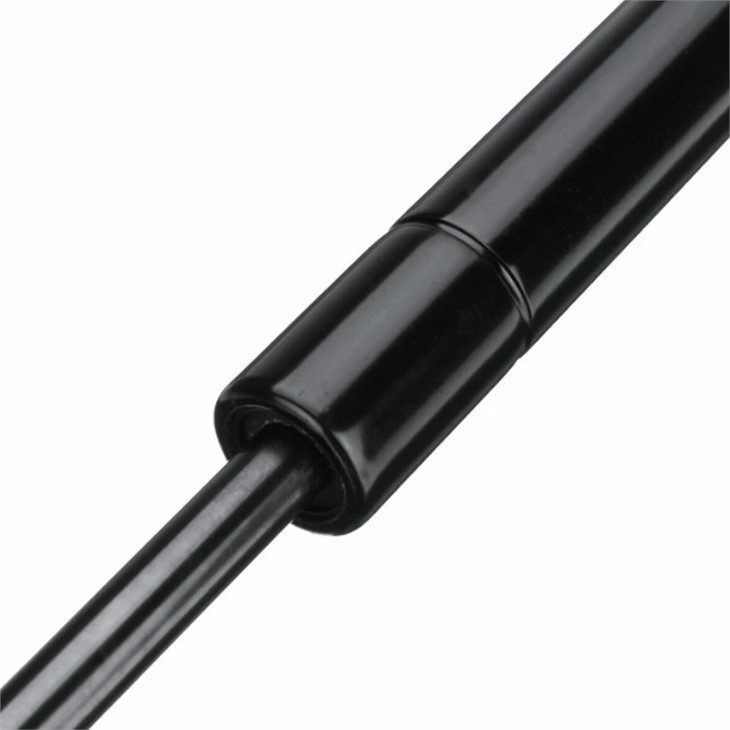
References
- Manufacturer's installation manuals for bonnet gas springs.
- Industry standards and guidelines for gas spring safety and performance.

